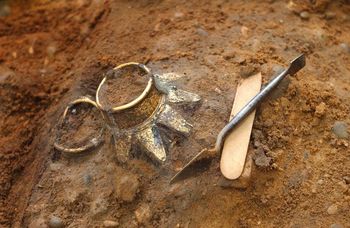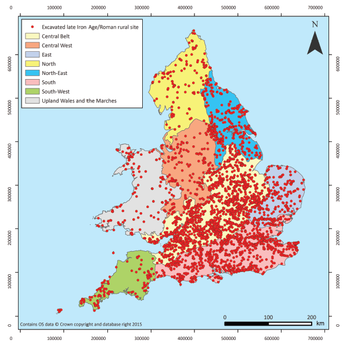Secondary education
Modern history (WW2)
The Defence of Britain Archive
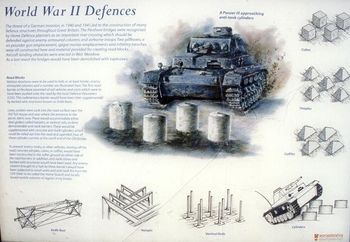
The Defence of Britain databases were created from field and documentary work carried out between 1995 and 2001. The purpose of the Project was to record the 20th century militarised landscape of the United Kingdom. The archive contains a database of defensive structures in the UK, including ‘Anti-Invasion’ structures (the defence works built primarily in the period 1940-41 against threatened German invasion) and ‘Non Anti-Invasion’ features (effectively, all the many other categories of 20th century military sites). This archive would be an ideal resource for students studying The Second World War and the changes that occurred in Britain as a result of the conflict. The search page can be used to search for defence structures by the type of site (e.g air raid shelter, pillbox) and by location. The database could also be used for local history projects, enabling students to search for and research a local site or defensive feature.
Medieval Britain
Glastonbury Abbey
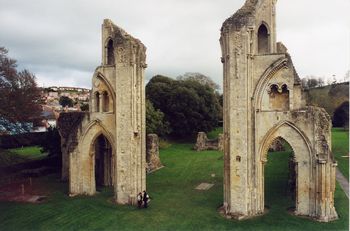
Glastonbury Abbey was renowned in the middle ages as the reputed burial place of the legendary King Arthur and the site of the earliest Christian church in Britain, believed to have been founded by Joseph of Arimathea in the First Century AD. During the last 20 years a number of archaeological projects have been carried out at Glastonbury Abbey, including archaeological excavations and a programme of conserving the monument’s upstanding masonry. Some remarkable discoveries have emerged from this work, such as the recovery of the fragmentary remains of a spectacular painted walls within the Lady Chapel. The Archaeology at Glastonbury Abbey on-line archive is split into five sections, with reports and photo galleries on subjects such as The Painted Decoration of the Lady Chapel and Excavations at St Patrick’s Chapel. Additionally, the Glastonbury Abbey: Archaeological Excavations 1904 – 1979 archive contains the complete dataset from the Glastonbury Abbey Archaeological Archive Project, including project records, databases, geophysical survey data, specialist reports on topics such as the medieval floor tiles and photographs of artefacts found during excavation, such as fragments of stained glass.
The Newport Medieval Ship
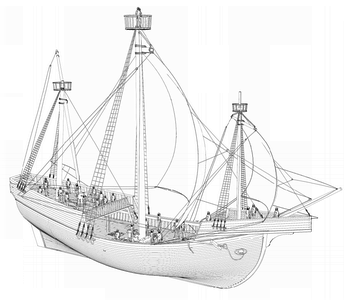
The Newport Ship is the most substantial late medieval vessel excavated and recovered in Britain. The ship was discovered during development on the west bank of the River Usk in Newport, South Wales in 2002. Hundreds of artefacts were discovered on the ship and archaeological analysis of the hull and environmental samples has revealed a lot about the origin and use of the ship, and about the people who sailed on it. Photographs, reports, drawings, videos, 3D models and a reconstruction of what the ship may have looked like are available to download in the archive.
Victorian Britain and the Industrial Revolution
Hollis Croft. A Matter of Time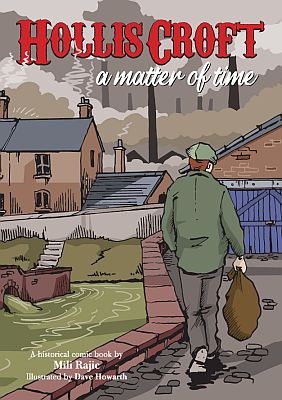
The comic, Hollis Croft. A Matter of Time, uses the factual historical and archaeological context of the site and the local landscape to reconstruct Hollis Croft in Victorian Sheffield. The comic book is a thought provoking work of fiction that explores themes such as LGBTQ+ history and the identity of people who lived and worked in the UK’s industrial towns and cities during the 19th Century. Links in the comic take the reader to an associated digital archive and other documents and images concerning the site and the project. The comic is free to access and download in digital format and is also available as quality print on demand.
Ancient history
The Rural Settlement of Roman Britain: an online resource
This project used archaeological evidence to investigate the countryside in Roman Britain. The digital archive includes an interactive map that can be used to search for and view sites such as Roman farms, villas, temples, burials and Roman roads in England and Wales. The Query Page can be used to search the project database, using either a keyword search or by creating a custom query with criteria such as the type of site and the pottery, coins or artefacts discovered. Many of the records
link directly to the site excavation reports. There are also three Britannia Monograph series publications which accompany the project. All three volumes are currently available to download for free in the ADS Library and cover subjects such as rural settlement, the rural economy and life and death in the countryside. This archive is an excellent resource for researching Roman Britain and the impact the Romans had on England and Wales. Students can use the map and archive to find and research a local Roman site or to learn more about the different types of Roman settlement using primary sources.
Analysis of Roman Silver coins, Augustus to the reform of Trajan (27 BC – AD 100)

Silver coins formed the backbone of currency in the Roman Empire and are likely to have been the main media for long-distance monetary exchange. This archive contains a database of Roman coins that can be searched for by Emperor, where they were minted or by denomination. The archive includes photographs and information on each coin and is an excellent tool for studying the Roman empire, with coins minted in locations such as Egypt, Syria, Gaul, Carthage and Asia.

